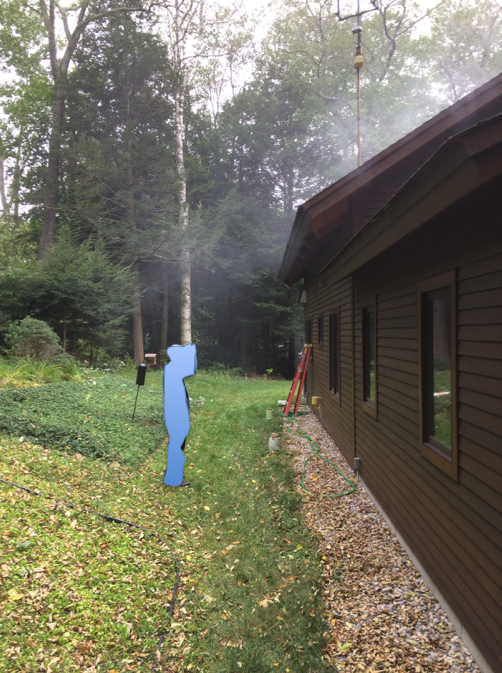And who decided that 1 grain of water moving through 1 square foot of a material in 1 hour at a vapor pressure difference of 1 inch of mercury was the right measure?
[Author’s Note, June 21 2019: I’d like to leave this story as is for the time being, even though–as my wife is wont to point out–I only got the story about half right. So, please read on but ONLY if you include the comments, certainly those of the ever-wise and kind (particularly to the author), Bill Rose.]
This is a story. Much of this story I believe to be true, but I can’t document much of it either. It all just makes sense, particularly as parts are conveyed by Bill Rose, our industry’s heralded building-science historian (see #2 in Bill’s to-do list for the building industry). Some of the story is based on one or more conversations I have had with Bill, which usually started something like this:
“Bill, where the hell do the units 1 grain of water and 1 inch of mercury vapor pressure come from in our unit of measure for water vapor permeance?”
Of the four units of measure in the perm, two are familiar and reasonable—1 sq. ft. and 1 hour (OK, let’s ignore the fact that the entire rest of the world thinks—and rightly so—that the foot, and therefore the square foot, is nuts as a unit of measure). The other two—1 grain of water and 1 in. of mercury—are just plain bizarre.
What’s a grain of water?
A grain of water is 1/7000 of a pound of water. Yes, there are 7000 grains of water in one pound of water. There, that’s helpful, right? What about this: With a very fine dropper, such as this micropipette, one drop of water is equal to about 1 grain of water (see the image below).

Well, that makes more sense, using a liquid or volume measure for water instead of weight. But that’s not what we use. Why weight and why grains instead?
Agriculture cares about grains of water, particularly in terms of grain elevators and the moisture content of the grains stored in them. The water content of grains affects their weight and size. It affects dust and fire safety. And when grains get too wet, water content can lead to degradation.
And here is a key to the story of how we arrived at the perm: It was wood scientists at the Forest Products Lab who first cared about how vapor moves through building materials. Why? Because paint peeling off of clapboards on walls that were insulated turned out to be caused by vapor and condensation (See this GBA blog by Alison Bailes).
Well, the Forest Products Lab is part of the Department of Agriculture. I can just imagine one of their building geeks chatting over the water cooler with an agriculture science buddy about really small units of measure for water. Believe it or not, we are pretty sure that is why we use grains of water. The Forest Products Lab needed a small unit to work with and their agriculture colleagues obliged.
Author’s Note, June 21 2019: The paragraph above is flat out wrong and quite embarrassing. Not just because I got the story completely wrong here, but more importantly because I confused a fictitious counting convention–a number of irregular particles per pound–with a true unit of measure, the grain.
“grain – 5. the smallest unit of weight, in most systems, originally from the weight of one plump grain of wheat. In the U.S. and British systems, as in avoirdupois, troy, and apothecaries’ weights, the grain is identical. In an avoirdupois ounce there are 437.5 grains; in the troy and apothecaries’ ounces there are 480 grains (one grain equals 0.0648 gram).” From Random House Unabridged Dictionary, 2nd Edition.
Okay, so what’s one inch of mercury?
There are a slew of units to choose from for vapor pressure including atmospheres, pascals, and pounds per square inch (PSI). But how much vapor pressure is 1 in. of mercury?
Let’s go to the amazingly friendly psychrometric chart so we can see the air temperatures and relative humidities that correspond to a 1 in. of mercury water vapor pressure difference (see the image below).

The blue circle in the upper right calls out 1.10 in. of mercury water-vapor pressure. You can follow the blue horizontal line to the left to reach about 85% relative humidity and then down to 85°F. That is roughly hygrothermal conditions inside a hothouse for growing tomatoes.
The red circle on the lower right calls out 0.10 in. of mercury water-vapor pressure. You can follow the red horizontal line to the left to reach roughly 35% relative humidity and then down the vertical red line to 35°F. That’s about the hygrothermal conditions inside a typical refrigerator.
So a vapor pressure difference of 1 in. of mercury is not common or representative in building environments at all. And typically in building science we use pascals to measure pressure. So why, in the case of perms, are we concerned with inches of mercury?
It’s all driven by the common numeric
Yup, it’s all about the “ones.” Bill told me (and I am paraphrasing): “I’m pretty sure they chose the units so that everything was a “one” and the perm represented a rate of vapor transmission that they thought retarded vapor movement enough to control wintertime interstitial condensation for certain walls in cold climates.”
So, perms are screwy units. But what a great story we get to tell. I mean, all those poor building scientists from the rest of world having to hail “nanograms H2O per square meter per second at 1 pascal” (1 perm = 1 gr / (ft2 × hr × in Hg) = 57.4 ng / (m2 × s × Pa). Sure, it’s way less archaic, but is there as good a story behind the units?






